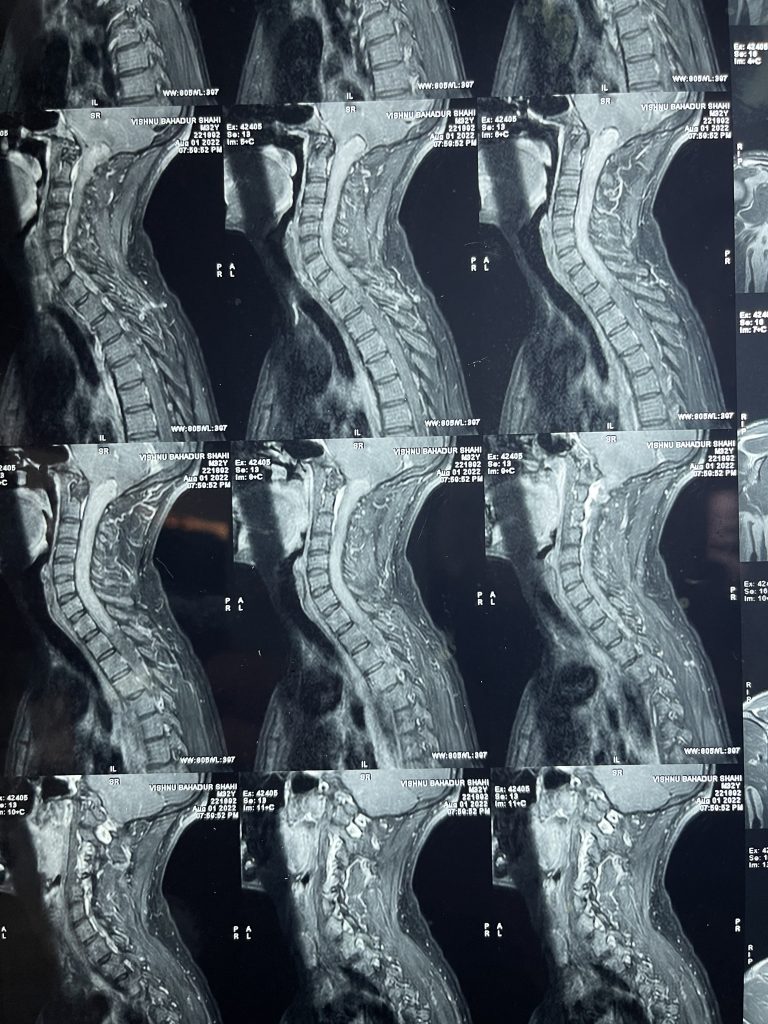

A 34 years gentleman presented with grade 2 Quadriparesis , and imaging showed large intramedullary tumor extending from Brainstem to Thoracic(T4) Level with associated syrinx.
Post fossa craniectomy and C1-T4 Laminectomy , Total excision of the tumor and Laminoplasty done.
Tumor was grayish black extending from brain stem and till T3 segment . Almost 19.5 cm long .
Post op patient already showing improvements.
In a remarkable medical achievement, we have successfully removed a 19.5 cm spinal intramedullary tumor from a patient. The patient had been experiencing progressive weakness and numbness in their lower extremities for several months before being diagnosed with the tumor. The tumor was located within the spinal cord itself, making the surgery incredibly complex and risky. However, the team of us was able to carefully remove the tumor without causing any damage to the surrounding tissues.
The surgery took several hours and involved the use of advanced imaging technology to guide the surgeons’ movements. The patient was kept under close observation for several days after the surgery and is now recovering well. This successful operation is a testament to the skill and expertise of the medical professionals involved and offers hope to patients who may be facing similar conditions in the future.
Spinal Tumors:
Spinal tumors are abnormal growths that develop within the spinal cord or surrounding tissues. They can be either cancerous (malignant) or noncancerous (benign). Spinal tumors can cause a range of symptoms depending on their location, size, and type. Some of the common symptoms of spinal tumors include back pain, numbness or weakness in the arms or legs, difficulty walking, loss of bowel or bladder control, and muscle spasms.
Diagnosis of spinal tumors typically involves a combination of imaging tests such as MRI, CT scan, and X-rays, as well as a biopsy to determine the type of tumor. Treatment options for spinal tumors depend on the type and location of the tumor, as well as the overall health of the patient. In some cases, surgery may be necessary to remove the tumor. Other treatment options may include radiation therapy, chemotherapy, or a combination of these therapies. Early detection and treatment are critical in managing spinal tumors and improving the patient’s quality of life.